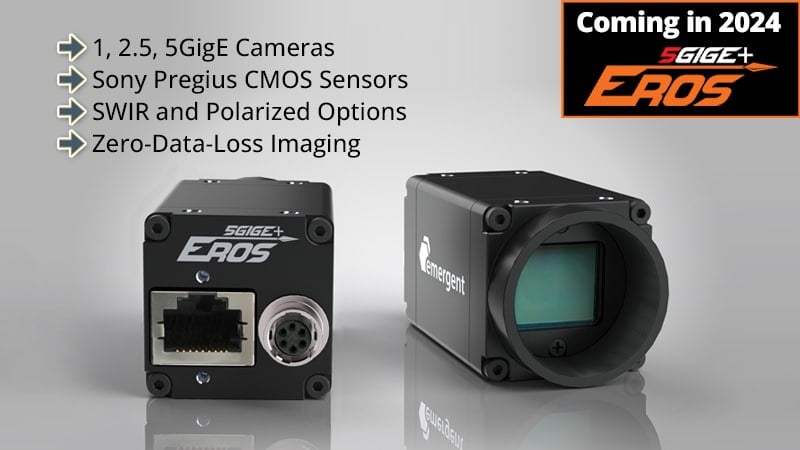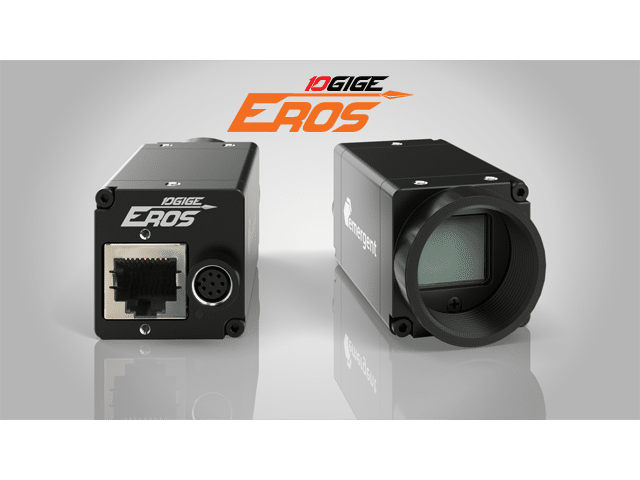Eros 5GigE Camera Series Coming in 2024

While 10GigE, 25GigE, and 100GigE cameras are necessary for applications where high speeds or high resolutions are necessary, not all machine vision or imaging systems out there require the use of these interfaces. With that in mind, Emergent Vision Technologies will introduce its Eros line of 5GigE cameras, which will feature many of the same Sony CMOS image sensors seen in our existing camera families, but in lower speed, lower cost, and smaller sized camera options to suit a wide range of applications.
Sony Pregius, SWIR, and Polarized Sensor Options
Also available in 1GigE and 2.5GigE options, Eros cameras will offer Sony CMOS sensors ranging from 0.5MP to 24.47MP with speeds as high as 330fps. In addition to offering several different models to suit a range of both single-camera implementations and multi-camera imaging systems, Eros cameras will offer SWIR cameras based on Sony’s SenSWIR CMOS image sensors. Based on Sony’s 0.33MP IMX991, the HE-300-S-I camera offers sensitivity ranging from 400 to 1700nm and speeds of up to 260fps, while the HE-1300-S-I offers the same sensitivity and leverages the 1.31MP Sony IMX990 for up to 135fps. Target applications include food and beverage inspection, agricultural imaging, semiconductor and electronics inspection, and more.
Eros cameras will also offer a polarized camera option based on the 5MP Sony IMX250MZR (mono) and IMX250MYR (color) Polarsens CMOS image sensor technology. These sensors feature microscopic wire-grid polarizers over every lens and have 0°, 45°, 90°, and 135° polarization angles in four-pixel groups; the groups are interpolated, reducing the sensor’s overall functional resolution by 4x. In other words, each four-pixel block equates to one pixel of output. These cameras can be used in applications where it’s necessary to separate reflected and transmitted scenes, which can be useful for detecting surface defects like dirt, bumps, dips, scratches, and bends when inspecting shiny objects.
Zero-Copy Imaging Performance
Eros cameras address a gap in the current market when it comes to zero-copy image transfer performance. Remote direct memory access (RDMA) and RDMA over Converged Ethernet v2 (RoCE v2), an implementation that supports zero-copy transfer, requires more FPGA resources to implement, which is more expensive than the lightweight, mature GigE Vision Streaming Protocol (GSVP), especially if a resend buffer is implemented. As a result, many camera manufacturers are not supporting RoCEv2 in cameras below 10GigE.
Eros cameras — which will support the optimized UDP-based GigE Vision Streaming Protocol — directly address this lack of support by continuing to provide true zero-copy performance, while other cameras continue to leverage TCP and conventional GVSP processing, which yields three times the memory bandwidth and 33% efficiency of Emergent’s zero-copy approach.




